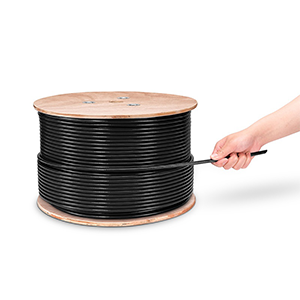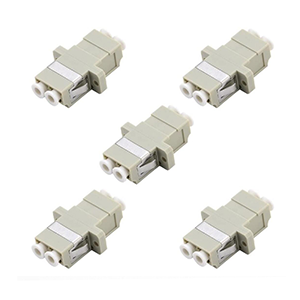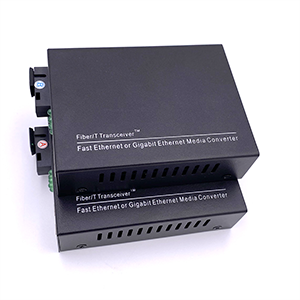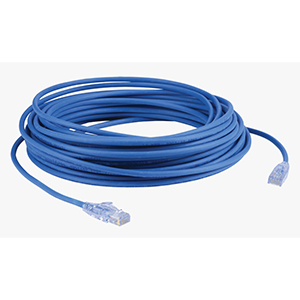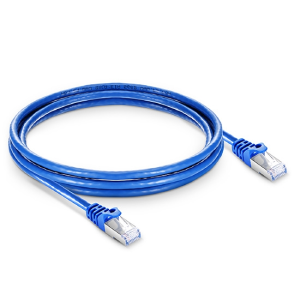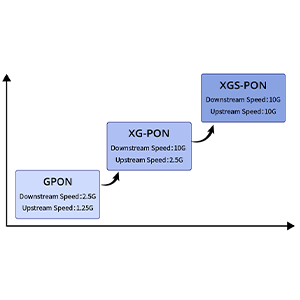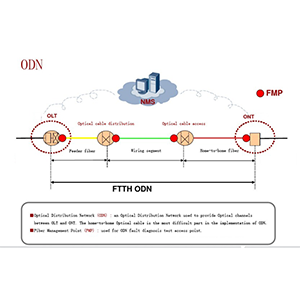Hi, welcome to read the introduction about 100G BiDi (Bidirectional) optical module. In this article, I will introduce you to the basic concepts and working principles of the 100G BiDi optical module, as well as its advantages as a solution that meets the needs of bidirectional high-speed data transmission.
We will also explore the application of 100G BiDi optical modules in data center networks and remote communications, as well as the high-speed bidirectional transmission capabilities and high-density cabling advantages it provides.
I also cover information on technical standards, compatibility, interface types, deployment configurations, and future trends. Let’s dive into the knowledge and advantages of 100G BiDi optical modules.
Introduction to 100G BiDi optical module
-
Definition and rationale:
The 100G BiDi optical module is a photoelectric conversion module used for high-speed data transmission, which can achieve bidirectional transmission on optical fiber. BiDi stands for Bidirectional, which uses an optical fiber to transmit both sending and receiving data signals at the same time. Compared with traditional unidirectional optical modules, 100G BiDi optical modules achieve bidirectional transmission without using additional optical fibers by using different wavelengths and optical demultiplexing technologies. -
Fundamental:
The basic principle of the 100G BiDi optical module is to utilize Multi-Level Wavelength Division Multiplexing (ML-WDM) technology. It uses two different wavelengths (usually 1270nm and 1330nm) to send and receive data respectively. The transmitting end encodes the data onto these two wavelengths respectively and sends them through the same optical fiber. The receiving end uses the corresponding wavelength to decode the received signal and restore it to the original data.
Bidirectional transmission requirements:
The need for high-speed data transmission in both directions is becoming more and more common in modern networks. Traditional optical modules require the use of two optical fibers for bidirectional transmission, which increases the cost and management complexity of optical fibers. The 100G BiDi optical module provides an efficient and economical solution by achieving bidirectional transmission on a single optical fiber.
The 100G BiDi optical module is a high-speed optical module that can achieve bidirectional transmission on a single optical fiber. It utilizes multi-level wavelength division multiplexing technology to transmit and receive data by using different wavelengths. As a solution to meet the needs of bidirectional high-speed data transmission, 100G BiDi optical modules can save fiber resources, simplify wiring, and are compatible with existing fiber infrastructure.
100G BiDi optical module application fields
-
Data center network:
100G BiDi optical modules are widely used in data center networks, especially in data transmission environments that require high density and high bandwidth. Here are some of its applications in data center networks: -
Server interconnection: 100G BiDi optical modules can be used to connect servers, storage devices and network equipment in the data center to achieve high-speed, two-way server interconnection. It can support fast communication within the data center and meet the needs for large-scale data processing and storage.
-
Data center interconnection: When high-speed data transmission is required between data centers, 100G BiDi optical modules can be used for data center interconnection. By using 100G BiDi optical modules, high-bandwidth, two-way communication can be achieved between data centers, supporting the transmission and sharing of large-scale data.
-
Network aggregation: In data center networks, 100G BiDi optical modules can be used for network aggregation to bring together multiple network links to provide higher bandwidth and fault tolerance.
The use of 100G BiDi optical modules can provide high-density, high-bandwidth data transmission while reducing the number and complexity of optical fibers used to meet the needs of data center networks for fast and efficient communication.
-
Remote communication:
100G BiDi optical modules also have certain application potential in the field of remote communications, especially when long-distance transmission requirements need to be met. Here are some possible application scenarios: -
Long-distance optical fiber transmission: Using 100G BiDi optical modules can reduce the number of optical fibers used, thereby reducing costs and management complexity. In situations where data transmission needs to occur across longer distances, 100G BiDi optical modules can provide an efficient solution.
-
Optical fiber access network: In the fiber access network, 100G BiDi optical modules can be used to provide high-speed two-way data transmission to meet users’ needs for large bandwidth and high-speed interconnection. It can be used to connect communications links between remote office locations, data centers and network service providers.
-
High-speed communication links: For applications that require high-speed transmission, such as high-definition video transmission, cloud services and large-scale data transmission, 100G BiDi optical modules can provide high bandwidth and bidirectional transmission capabilities to meet the needs of high-speed communication links.
The feasibility and applicability of using 100G BiDi optical modules in the field of remote communications needs to be evaluated based on specific application requirements and network scale. However, due to its bidirectional transmission and high bandwidth characteristics, 100G BiDi optical modules may become an attractive solution in the field of long-range communications.
100G BiDi optical module features and advantages
- High-speed two-way transmission capability:
The 100G BiDi optical module provides high-speed bidirectional data transmission capabilities, and each fiber carries the function of sending and receiving signals at the same time. This is achieved by utilizing different wavelengths for optical demultiplexing. A typical 100G BiDi optical module uses two different wavelengths (usually 1270nm and 1330nm) to send and receive data. This bidirectional transmission capability makes it possible to achieve high-speed bidirectional data communication on the same optical fiber.
Compared with traditional unidirectional optical modules, the bidirectional transmission capabilities of 100G BiDi optical modules have the following advantages:
- Simplified wiring: Due to bidirectional transmission, it is no longer necessary to lay out two optical fibers separately for transmission and reception, thus simplifying the complexity of wiring. This reduces the number of fibers, reduces connection points and costs, and increases cabling flexibility and maintainability.
-
Improve bandwidth utilization: The 100G BiDi optical module realizes bidirectional transmission on the same optical fiber, making full use of the bandwidth resources of the optical fiber. It can meet the needs of sending and receiving data at the same time, providing higher bandwidth utilization and data transmission efficiency.
-
High-density wiring:
100G BiDi optical modules have significant advantages in high-density wiring. Below is a discussion of the relevant advantages: -
Reduce the number of optical fibers: By using 100G BiDi optical modules, bidirectional transmission data can be merged onto a single optical fiber, thereby reducing the number of optical fibers. Compared with traditional unidirectional optical modules, which require the use of two optical fibers for bidirectional transmission, 100G BiDi optical modules can significantly reduce the number of optical fibers used, reducing the cost and space occupied by optical fibers.
-
Space saving: Due to the reduction in the number of optical fibers, the 100G BiDi optical module takes up less space in the computer room or equipment architecture. This is especially important in space-constrained environments such as data centers, allowing for higher cabling density and better space utilization.
-
Flexibility and scalability: The high-density wiring characteristics of 100G BiDi optical modules make the network architecture more flexible and scalable. By reducing the number of optical fibers and simplifying cabling, network administrators can more flexibly plan and configure their networks to meet growing bandwidth demands.
100G BiDi optical module technical standards and specifications
-
Optical module structure:
The structural characteristics of 100G BiDi optical modules are usually as follows: -
Number of ports: 100G BiDi optical modules usually have multiple ports for connecting optical fibers and other devices. A typical 100G BiDi optical module may have multiple fiber input and output ports to support bidirectional data transmission.
-
Fiber type: 100G BiDi optical modules generally use multi-mode fiber (MMF) for transmission. This type of fiber is suitable for short-distance transmission and is typically used in environments such as data center networks.
-
Power supply: 100G BiDi optical modules usually require an external power supply. Specific power requirements may vary by vendor and model, but generally they need to receive an appropriate DC power supply.
It should be noted that the specific construction characteristics of 100G BiDi optical modules may vary depending on different suppliers and models. In actual use, the relevant supplier’s specification sheets and documentation should be consulted for accurate construction characteristics.
-
Communication protocol:
100G BiDi optical module supports multiple communication protocols, some of the main communication protocols include: -
Ethernet: 100G BiDi optical module widely supports Ethernet protocols, including various rates and standards of Ethernet, such as 100 Gigabit Ethernet defined in the IEEE 802.3ba standard.
-
InfiniBand: InfiniBand is a communications protocol used for high-performance computing and data center interconnects. 100G BiDi optical module can support InfiniBand protocol for high-speed data transmission and communication.
-
Fiber Channel: Fiber Channel is a communication protocol used for storage networks. The 100G BiDi optical module can support the Fiber Channel protocol and is used to connect storage devices and data center networks.
In addition to the above communication protocols, 100G BiDi optical modules can also support other specific communication protocols and applications, depending on the vendor and product support scope.
It should be noted that in order to ensure compatibility and interoperability, when using 100G BiDi optical modules, the corresponding communication protocol should be selected based on actual needs and application scenarios, and ensure that the protocols between the optical module and other equipment match.
100G BiDi optical module compatibility and interface types
-
Compatibility points:
When considering using 100G BiDi optical modules, here are some compatibility points to note: -
Equipment compatibility: 100G BiDi optical modules need to connect and communicate with other equipment (such as switches, routers, servers, etc.). It is crucial to ensure the compatibility of the selected 100G BiDi optical module with the target device. When selecting an optical module, you need to check the equipment manufacturer’s optical module compatibility list or consult its technical support to ensure that the selected optical module has good compatibility with the equipment.
-
Fiber optic compatibility: 100G BiDi optical modules usually use multi-mode fiber (MMF) for transmission. It is very important to ensure that the optical fiber used is compatible with the 100G BiDi optical module. Pay special attention to the type of optical fiber (such as OM3, OM4, etc.) and connector type (such as LC, MPO, etc.) to ensure that the optical fiber and connector match the 100G BiDi optical module.
-
Protocol compatibility: 100G BiDi optical module supports various communication protocols, such as Ethernet, InfiniBand and Fiber Channel, etc. Ensuring that the selected 100G BiDi optical module is compatible with the required communication protocol is key. When selecting an optical module, you need to review the specification sheet and documentation of the optical module to ensure that it states that it supports the required communication protocol.
-
Interface type:
100G BiDi optical modules usually use the following common interface types: -
LC interface: LC (Lucent Connector) is a common fiber optic connector type used for single-mode and multi-mode fiber optic connections. The LC interface is usually used to connect 100G BiDi optical modules and optical fibers.
-
MPO interface: MPO (Multi-fiber Push-On) is a multi-fiber optical fiber connector type used for multi-mode optical fiber connections. MPO interfaces are typically used in high-density cabling environments and can transmit multiple optical fibers simultaneously through one connector. In some cases, 100G BiDi optical modules may use MPO interfaces.
It should be noted that the specific interface type used may vary depending on the vendor and product model. When selecting and using 100G BiDi optical modules, you should pay attention to the interface type of the selected optical module and ensure that it matches the required optical fibers and connectors.
Deployment and configuration of 100G BiDi optical module
-
Optical module installation:
The following is a general installation guide for 100G BiDi optical modules, including connection and fixing steps: -
Step 1: Make sure the optical module is compatible with the device. Check the device’s optical module compatibility list or consult the device manufacturer to ensure that the selected 100G BiDi optical module is compatible with the device.
-
Step 2: Power off the target device. Before installing the optical module, be sure to power off the device.
-
Step 3: Insert the 100G BiDi optical module into the optical module slot of the device. According to the interface type of the device (such as LC or MPO), insert the optical module into the corresponding optical module slot. Make sure the optical module is inserted in the correct direction and push it in gently until the socket is fully inserted.
-
Step 4: Fix the optical module. Depending on the design of the device, you may need to use screws or buckles to secure the optical module to ensure a secure connection. Follow the installation instructions for your device.
-
Step 5: Connect the optical fiber. Use fiber optic connectors (such as LC or MPO) to connect the 100G BiDi optical module and other devices or optical fibers. Make sure the optical fiber connector is correctly inserted into the optical module interface and secure the connection.
-
Step 6: Power on the device. After completing the optical module installation and fiber connection, you can power on the device and perform the necessary configurations.
It should be noted that the specific optical module installation steps may vary depending on the device and supplier. Please refer to the device and optical module installation guides for exact installation steps and requirements.
-
Network configuration:
The network configuration of 100G BiDi optical module usually involves the following aspects: -
Port configuration: Perform port configuration on the target device to identify and enable the port connected to the 100G BiDi optical module. This may include assigning a unique identifier (such as a port number or interface name) to the port to which the optical module is connected.
-
Transmission parameter adjustment: Depending on actual network requirements and environmental conditions, the transmission parameters of the 100G BiDi optical module may need to be adjusted. These parameters may include transmission rate, bandwidth allocation, bit error rate, etc. Specific transmission parameter adjustments may vary depending on device and network requirements, and usually need to be configured on the device’s management interface or command line interface.
-
Other configurations: Depending on specific network requirements, other configurations may be required, such as VLAN configuration, QoS configuration, security configuration, etc. These configurations may need to be performed on the device’s management interface or command line interface.
Ongoing network when configuring the network, it is recommended to refer to the user manuals, configuration guides, or documents provided by the device and optical module for accurate configuration methods and parameter descriptions. Ensure configuration according to best practices and required network requirements to ensure proper operation and performance optimization of the system.
Future development of 100G BiDi optical modules
The 100G BiDi optical module is an important solution in the current high-speed optical communication field. With the continuous development of technology, it also has some future development trends:
-
Higher transmission rates: As the demands of data centers and communication networks continue to increase, the need for higher transmission rates is also emerging. At present, 100G BiDi optical modules have become the mainstream 100G transmission solution, but the transmission rate is expected to be further improved in the future. For example, next-generation optical module technology, such as 200G or 400G BiDi optical modules, is under development and will be able to provide higher data transmission rates.
-
Smaller size and higher integration: With the advancement of technology, the size and power consumption of optical modules are gradually decreasing. Future 100G BiDi optical modules may adopt smaller packages and higher integration levels to adapt to the needs of high-density wiring environments and compact equipment.
-
Wider application areas: 100G BiDi optical modules are currently mainly used in data center interconnection and short-distance communications, but as the technology matures and costs decrease, its application areas may expand. In the future, 100G BiDi optical modules may be used in more communication scenarios, including enterprise networks, wireless communications, and long-distance transmission.
-
Further compatibility and standardization: With the rapid development of optical communication technology, compatibility and standardization issues between different manufacturers and standards organizations have become increasingly important. In the future, 100G BiDi optical modules are expected to further improve compatibility with other devices and network interfaces, and follow more stringent industry standards to ensure interoperability and versatility.
Summarize:
Thank you for reading the introduction about 100G BiDi optical modules. As a solution that meets the needs of two-way high-speed data transmission, 100G BiDi optical modules are widely used in data center networks and remote communications. It provides high-speed bidirectional transmission capabilities. Each fiber carries sending and receiving signals at the same time, achieving bidirectional high-density and high-bandwidth data transmission.
At the same time, the high-density wiring advantage of 100G BiDi optical modules reduces the number of optical fibers and space occupation. In the future, 100G BiDi optical modules are expected to continue to develop in technology and applications, achieving higher transmission rates and expanding into wider application areas. If you have any further questions about the 100G BiDi optical module or want to know more information, please continue to follow GracyFiber Company, we will be happy to help you. Thanks!
- What is the range of BiDi SFP?
- What is 100G QSFP28 transceiver?
- What are the different types of 100G SFP?
- What is 40gb BiDi?
- What are the 100G optic standards?
- How does BiDi SFP work?
- What is the wavelength of 100G SFP?
- What is BiDi SFP module?
- What is the difference between BiDi and normal SFP?
- What is the difference between U and D in BiDi SFP?


